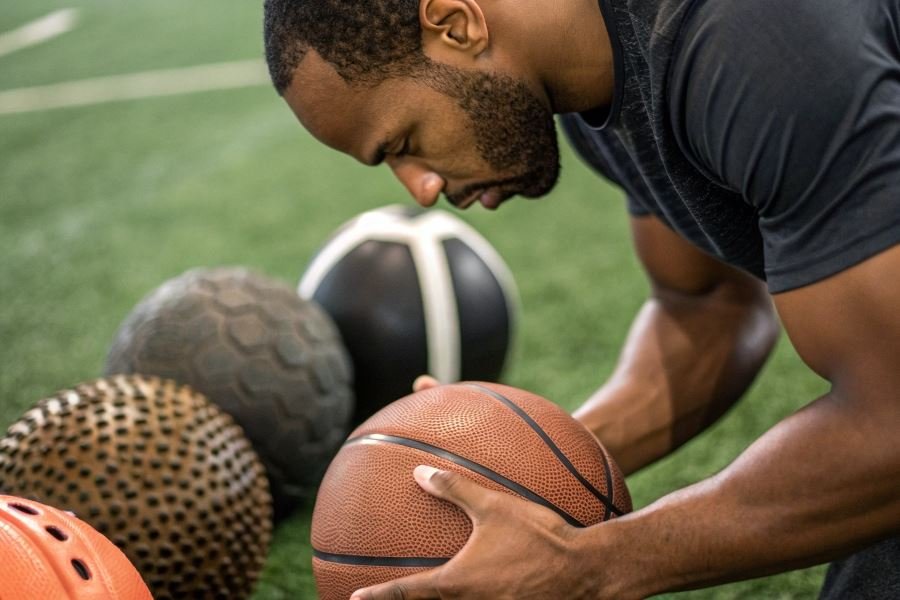
Ever watched a pro athlete strike a ball with such precision it seems almost supernatural? That perfect connection isn’t magic—it’s the result of thousands of practice hours with the right equipment. The ball you choose for practice can be the difference between developing bad habits and honing championship-level technique.
When selecting balls for practicing strikes, you’re not just buying sports equipment—you’re investing in your technical development. The weight, feel, and response of a practice ball creates the foundation upon which your muscle memory builds. Choose wisely, and your skills accelerate. Choose poorly, and you might actually regress.
“The quality of your practice determines the ceiling of your potential.” – This philosophy applies directly to the tools you use during training.
Practice balls are engineered differently across sports for specific reasons. A baseball hitter training with weighted balls develops explosive bat speed, while a soccer player using a slightly deflated ball improves touch sensitivity. Tennis players might use pressureless balls that maintain consistent bounce through hundreds of machine-fed drills.
Your skill level matters tremendously in this equation. Beginners benefit from forgiving equipment that builds confidence—like slightly larger soccer balls or softer baseballs. Advanced athletes need practice balls that replicate game conditions with uncompromising accuracy, sometimes even introducing deliberate challenges to elevate technique.
The material composition affects everything from durability to performance feedback. That distinctive “thwack” when you strike the ball perfectly? That’s your equipment communicating with you, providing the sensory feedback essential for refinement.
The Material Matrix: What Makes a Perfect Practice Ball
When selecting balls for practicing strikes, the material composition forms the foundation of your training experience. The right ball can dramatically accelerate skill development while the wrong one might reinforce poor technique. Whether you’re working on your soccer free kicks, baseball swings, or golf drives, understanding what to pay attention to when buying balls for practicing strikes can make the difference between frustration and breakthrough.
Material Matters: Performance and Feel
The outer shell material of a practice ball dictates both its flight characteristics and tactile feedback. Premium soccer training balls typically feature polyurethane (PU) covers that mimic match ball feel while offering superior durability. In contrast, TPU (thermoplastic polyurethane) provides excellent weather resistance at a lower price point but sacrifices some touch sensitivity.
For baseball hitters, practice balls range from lightweight polymer foam to dimpled plastic, each serving different training purposes. Weighted balls have gained popularity since their widespread adoption around 2015, with research showing significant velocity improvements when incorporated into structured programs.
Golf practice balls showcase perhaps the widest material spectrum:
| Material Type | Indoor/Outdoor | Feel Authenticity | Durability Rating |
|---|---|---|---|
| Foam | Indoor | Low | Medium |
| Plastic | Both | Medium | High |
| Limited Flight | Outdoor | High | Medium-High |
| Wiffle-style | Both | Low | Very High |
The material choice should align with your specific training goals rather than simply price point.
Construction Quality That Enhances Training
Beyond materials, the internal construction dramatically affects how a practice ball performs. Soccer training balls with hand-stitched panels provide better shape retention than machine-stitched alternatives. The number of panels matters too—32-panel designs offer traditional flight patterns while newer 14-panel constructions provide more predictable trajectories.
For baseball training, the core density of practice balls determines their compression rate upon impact. Dimple pattern variations can simulate different pitch movements, allowing batters to practice against specific breaking ball trajectories.
Tennis practice balls often feature pressureless construction, sacrificing some bounce authenticity for dramatically extended lifespan—a worthwhile tradeoff for high-volume training sessions.
The construction quality doesn’t just affect performance—it determines whether your practice ball will last through ten sessions or a hundred.
Durability Across Environments
Environmental factors dramatically impact ball longevity. Indoor practice balls face different stresses than those used on abrasive outdoor surfaces. Wilson training balls designed for concrete courts feature reinforced seams that withstand surface friction, while Spalding indoor basketballs prioritize grip retention over abrasion resistance.
Temperature fluctuations challenge ball integrity as well. Premium soccer balls from Nike maintain consistent air pressure across temperature ranges, while budget options may require frequent reinflation during seasonal changes.
Practice intensity level should guide your durability expectations. High-repetition drills demand materials that resist compression fatigue. Baseball pitchers throwing hundreds of daily pitches need practice balls with reinforced seams and resilient cores that maintain consistent flight characteristics despite repeated high-velocity impacts.
The sweet spot lies in finding practice balls that balance authentic performance feel with the durability to withstand your specific training environment and intensity. The investment in quality practice equipment pays dividends in skill development that cheap alternatives simply cannot match.
Making the Right Selection: Matching Practice Balls to Your Needs
Finding the perfect practice ball isn’t just about grabbing whatever’s on sale—it’s about matching equipment to your specific training goals, skill level, and sport. Let’s dive into how to select practice balls that will genuinely improve your striking technique without breaking the bank.
Sport-Specific Ball Requirements
Different sports demand dramatically different practice balls. The specifications aren’t just marketing—they’re essential performance features:
Soccer/Football: Look for training balls with reinforced panels that can withstand repeated impacts against walls. Nike Strike training balls offer enhanced visibility with high-contrast graphics, while Adidas Tango training models provide excellent durability for repetitive striking practice.
Baseball/Softball: Weighted training balls ranging from 4-12oz help develop arm strength and proper mechanics. SKLZ Weighted Training Balls offer progressive resistance training, while softer Franklin Sports practice balls allow for indoor hitting without damaging walls.
Tennis: Pressureless practice balls last significantly longer than standard balls—some maintaining consistent bounce for years rather than weeks. Wilson Pressureless practice balls offer excellent durability, while Penn Coach training balls provide a slower pace ideal for technique development.
The material composition directly impacts training effectiveness—foam balls reduce injury risk but sacrifice authentic feel, while specialized rubber compounds balance durability with realistic response.
Budget Considerations and Value Assessment
Practice balls span an enormous price range, but cost doesn’t always correlate with quality:
| Ball Type | Entry Level | Mid-Range | Premium |
|---|---|---|---|
| Soccer Training | $15-25 | $25-40 | $40-65 |
| Baseball Training | $10-20 | $20-35 | $35-60 |
| Tennis Practice | $15-30 (bucket) | $30-50 (bucket) | $50-80 (bucket) |
Value indicators to watch for:
- Reinforced seams and impact zones
- Weather-resistant materials
- Consistent weight distribution
- Manufacturer warranty length
Don’t confuse “match quality” with “practice quality”—the best game ball might not be the best training ball. Practice-specific features like enhanced durability often matter more than tournament specifications.
Skill-Level Recommendations
For Beginners: Prioritize forgiveness and feedback over authenticity. Slightly larger, softer balls with visual alignment cues help develop proper technique without punishment.
- Soccer: Select Numero 10 training balls offer excellent touch sensitivity
- Baseball: Easton Incrediball provides realistic feel with reduced injury risk
- Tennis: Gamma Pressureless Practice Balls maintain consistent bounce for extended practice sessions
For Intermediate Players: Seek balance between durability and authentic game feel. Look for balls with reinforced striking surfaces that maintain proper weight and dimensions.
For Advanced Practitioners: Consider specialized training balls that isolate specific skill development:
- Reduced-size soccer balls to improve precision
- Variable-weight baseballs for pitch development
- Tennis balls with modified compression for serve practice
The most effective practice regimen often involves multiple ball types—lighter options for technique refinement and heavier versions for power development. This progressive approach creates a comprehensive striking practice that translates directly to game performance.
